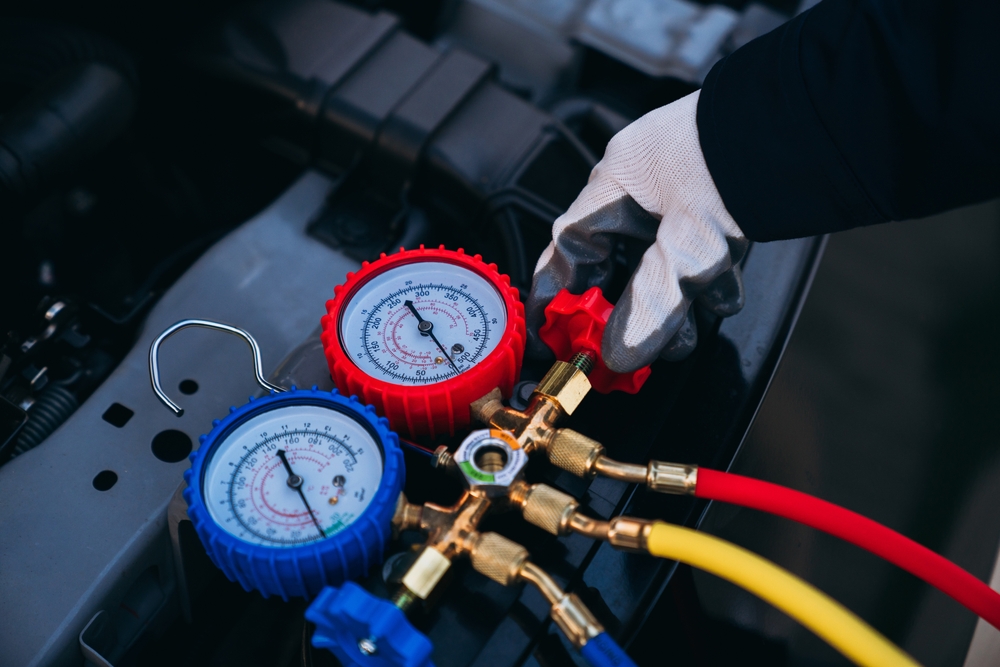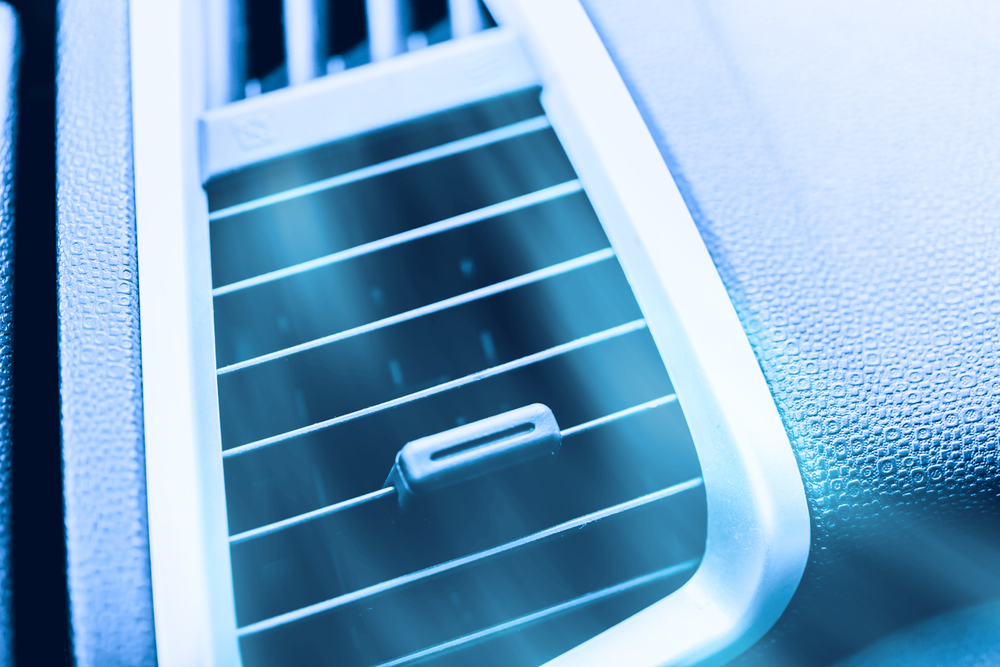Picture this: you’re cruising down International Speedway Boulevard on a sweltering July afternoon, windows down, when suddenly your Mazda’s air conditioning starts blowing warm, stale air. In Daytona Beach, where summer temperatures routinely climb into the mid-90s with humidity that makes it feel even hotter, a failing A/C system isn’t just uncomfortable—it’s potentially dangerous. Your Mazda’s cooling system works overtime in Florida’s relentless heat and humidity, making regular professional A/C maintenance absolutely essential for both comfort and safety on every drive.
At Daytona Mazda Service Center, our factory-trained technicians understand exactly how Florida’s brutal climate affects your Mazda’s air conditioning performance. We use only genuine Mazda refrigerant and OEM parts, ensuring your cooling system operates at peak efficiency when you need it most. Whether you’re commuting to work in Port Orange, heading to the beach, or driving to a race at Daytona International Speedway, we’ll make sure your Mazda keeps you cool and comfortable throughout every journey.
Why Mazda A/C Systems Fail in Florida’s Heat & Humidity
Florida’s extreme climate creates the perfect storm for automotive air conditioning problems. When humidity levels soar above 85%, your A/C system has to work significantly harder to remove moisture from the air before it can effectively cool your car’s interior. This dual workload—cooling and dehumidifying simultaneously—puts tremendous strain on every component, from the compressor to the evaporator coils.
The coastal environment around Daytona Beach adds another layer of complexity. Salt air accelerates corrosion on metal components, while sand and debris can clog filters and reduce airflow efficiency. Florida’s year-round heat means your A/C system operates almost continuously, leading to accelerated wear and significantly shorter component lifespans compared to vehicles in cooler climates. What’s more, the combination of high temperatures and humidity creates perfect conditions for mold and mildew growth within the system, potentially affecting both performance and air quality inside your Mazda.
Modern Mazda vehicles use specific refrigerant types—either R-134a in older models or the newer, more environmentally-friendly R-1234yf in recent years. These refrigerants have different performance characteristics and cannot be mixed or substituted without potentially damaging your cooling system. Understanding which refrigerant your specific Mazda model requires is crucial for maintaining optimal cooling performance and avoiding costly repairs down the road.
When to Inspect & Recharge Your Mazda’s A/C—Signs You Can’t Ignore
Don’t wait until you’re stuck in traffic on I-95 with no cold air to get your Mazda’s A/C checked. Several warning signs indicate it’s time for professional inspection and potential recharge. The most obvious sign is warm air blowing from your vents, but other symptoms can be more subtle yet equally important.
Listen carefully to your A/C system when it’s running. Unusual noises—grinding, squealing, or clicking sounds—often indicate worn compressor components or loose belts that need immediate attention. Visual inspections can reveal refrigerant leaks, which typically appear as oily residue around connection points or under your Mazda after it’s been parked. Additionally, if you notice musty odors when first turning on your A/C, this could signal mold or mildew growth within the system.
Pay attention to how quickly your A/C reaches desired temperatures. In Florida’s climate, a properly functioning system should achieve noticeable cooling within the first few minutes of operation. If your system takes longer to cool down or never quite reaches comfortable temperatures, refrigerant levels may be low or other components may need professional attention.
Mazda-Approved A/C Inspection Process at Daytona Mazda (OEM, Certified Tech)
Our comprehensive inspection process goes far beyond simply checking refrigerant levels. At Daytona Mazda Service Center, we use only Genuine Mazda Parts and follow manufacturer-approved diagnostic procedures, ensuring your vehicle receives the exact care it was designed for. Our factory-trained technicians begin every inspection with a complete system pressure test to accurately assess refrigerant levels and identify any leaks.
We thoroughly examine all belt-driven components, including the compressor clutch and pulley systems, checking for wear patterns that could indicate impending failure. The evaporator and condenser coils receive detailed inspection for blockages, corrosion, or damage that could restrict airflow or reduce cooling efficiency. Our technicians also test electrical connections and control modules, as modern Mazda vehicles rely heavily on electronic systems to optimize A/C performance.
One critical aspect of our inspection process involves checking refrigerant purity and moisture content. Contaminated refrigerant can severely damage your A/C system, so we use professional-grade testing equipment to ensure any existing refrigerant meets Mazda’s strict quality standards. If contamination is detected, we’ll recommend a complete system flush and recharge to protect your investment and restore optimal cooling performance.
The A/C Recharge Step-by-Step (What We Do Differently)
Our professional A/C recharge process ensures precise refrigerant quantities and optimal system performance. We start by safely recovering any remaining refrigerant using EPA-approved recovery equipment, preventing environmental damage while allowing us to measure exactly how much refrigerant was in your system. This measurement provides valuable diagnostic information about potential leaks or other issues.
Next, we create a deep vacuum in the system, removing all air and moisture that could contaminate the new refrigerant or reduce cooling efficiency. This evacuation process typically takes 15-30 minutes and is absolutely critical for long-term system reliability. Once evacuation is complete, we add the precise amount of genuine Mazda-approved refrigerant specified for your particular model year and engine configuration.
What sets our process apart is our attention to detail and use of OEM specifications. Different Mazda models require specific refrigerant quantities—typically ranging from 14-24 ounces depending on your vehicle—and using the wrong amount can significantly impact cooling performance. We also add the correct type and amount of compressor oil, ensuring proper lubrication and extending component life in Florida’s demanding climate.
| Service Step | What We Check | Why It Matters in Florida | Time Required |
|---|---|---|---|
| System Pressure Test | High/low side pressures, leak detection | Heat stress reveals hidden leaks | 15-20 minutes |
| Refrigerant Recovery | Existing refrigerant quality & quantity | Humidity causes contamination | 10-15 minutes |
| System Evacuation | Complete moisture & air removal | Prevents corrosion from humid air | 15-30 minutes |
| Refrigerant Recharge | Precise OEM-specified quantities | Optimal cooling in extreme heat | 10-15 minutes |
| Performance Verification | Vent temperature, system pressures | Confirms readiness for Florida heat | 10-15 minutes |
Why DIY A/C Kits Often Fail (And When You Shouldn’t Risk It)
While DIY A/C recharge kits might seem like a cost-effective solution, they frequently create more problems than they solve, especially in Florida’s challenging climate. Most over-the-counter kits cannot accurately measure existing refrigerant levels, leading to overcharging that can damage your compressor or undercharging that provides inadequate cooling when you need it most.
Professional equipment allows us to precisely control refrigerant quantities and ensure proper system evacuation—something impossible with basic DIY kits. Modern vehicles use different refrigerant types that cannot be mixed, and DIY kits make it easy to accidentally add the wrong type, potentially causing thousands in damage. Additionally, many DIY products contain stop-leak additives that can clog system components or interfere with professional service equipment later.
The biggest risk with DIY recharging involves safety and environmental concerns. Refrigerant is stored under high pressure and can cause severe frostbite injuries if handled improperly. Professional recovery and recycling prevents environmentally harmful refrigerant release while ensuring compliance with federal regulations. When dealing with your Mazda’s cooling system in Florida’s extreme conditions, professional service isn’t just recommended—it’s essential for reliable, safe operation.
Frequently Asked Questions
Q: How often should I get my Mazda A/C inspected in Daytona Beach?
A: Due to Florida’s year-round heat and humidity, we recommend annual A/C inspections before summer’s peak intensity. If you notice any performance changes or live in high-salt coastal areas, more frequent checks may be beneficial.
Q: What are the common signs of a refrigerant leak?
A: Look for oily residue around A/C connections, reduced cooling performance, unusual noises from the compressor, or sweet-smelling odors. Professional leak detection using specialized equipment provides the most accurate diagnosis.
Q: Can I recharge my Mazda’s A/C myself using a DIY kit?
A: While DIY kits exist, they cannot provide the precise refrigerant measurements, system evacuation, and contamination testing that professional service ensures. Improper charging can damage expensive components.
Q: What refrigerant does my Mazda use—and can I mix different types?
A: Mazda vehicles typically use either R-134a or R-1234yf refrigerant depending on model year. These cannot be mixed, and using the wrong type can cause serious system damage. Our technicians verify the correct refrigerant for your specific vehicle.
Q: How long does a professional A/C recharge at Daytona Mazda take?
A: Complete inspection and recharge typically takes 1-2 hours, including proper evacuation, leak testing, and performance verification. We offer comfortable waiting areas and can often provide same-day service.
Q: Will recharging fix mold or odor issues in my car?
A: Refrigerant recharge addresses cooling performance, but odors usually require additional cabin air filter replacement and evaporator cleaning. Our technicians can identify and address all sources of A/C-related odors during inspection.
Book Your A/C Inspection & Recharge Today
Don’t let Florida’s brutal heat and humidity compromise your comfort or safety. At Daytona Mazda Service Center, our factory-trained technicians provide the expertise and genuine Mazda parts your vehicle deserves. We’re conveniently located in the Daytona Auto Mall on North Tomoka Farms Road, making professional A/C service easily accessible whether you’re coming from Port Orange, Ormond Beach, or anywhere in Volusia County.
Our state-of-the-art service facility offers same-day A/C inspection and recharge services, often completed while you wait in our comfortable customer lounge. We provide transparent diagnostics, upfront estimates, and use only genuine Mazda refrigerant and OEM parts to ensure long-lasting performance in Florida’s demanding climate. Schedule your appointment online or visit us during our convenient service hours: Monday through Friday 7:30 AM to 6:00 PM, Saturday 8:00 AM to 2:00 PM.
We’re located at 1312 North Tomoka Farms Road, Daytona Beach, FL 32124



